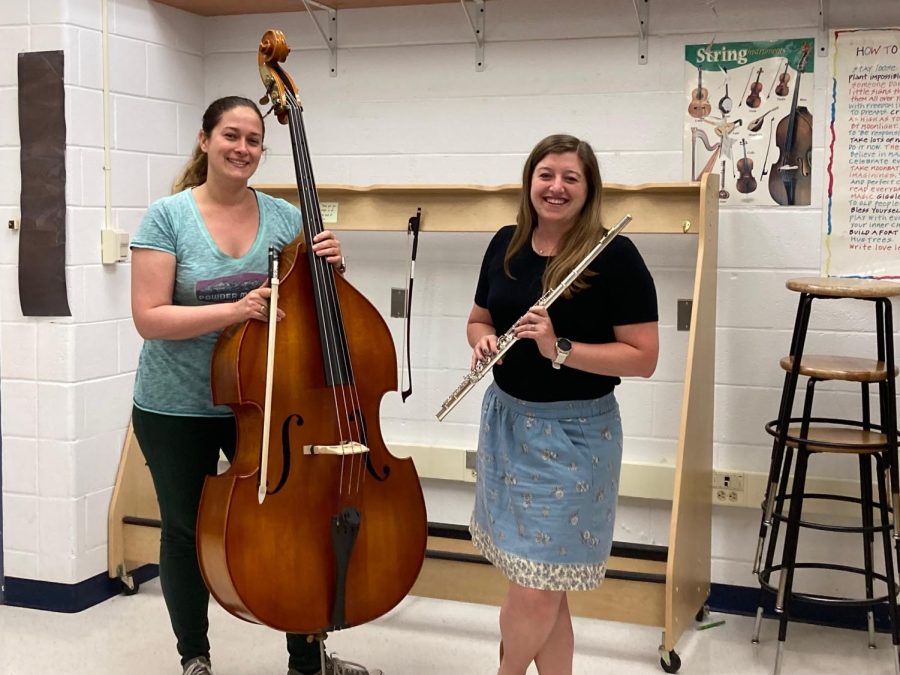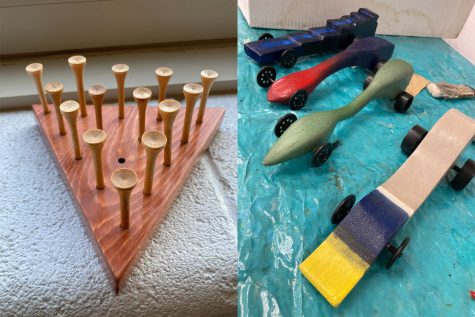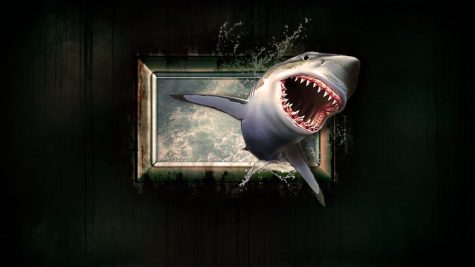Rivalry or Friendly Competition? Inside the Band vs. Strings Debate
Whether you enjoy the dulcet tones of a cello or the light touch of the flute’s trills, you probably don’t spend a lot of time thinking about which is better. Students in Longfellow’s music department, however, find that a healthy rivalry between band and strings keeps them on their toes.
In orchestra, you’ll find instruments like violin, viola, cello, and the double bass. The Strings Program is led by Jaqueline Robertson, who has only held the position for two years. However, she worked with her predecessor, Bomin Collins, earning her place here.
“I met a lot of my lifelong friends in orchestra, and it’s kinda cool because you get to work together with people and get to know people, and it’s non-verbal. You move together, and you actually play together,” said Ms. Robertson.
There are five different orchestras; Cadet, String Ensemble, Concert, Symphonic, and Chamber. The latter has been to many different music competitions around the country, consistently bringing trophies back to Longfellow.
Band is made up of many types of instruments denoted by their physical characteristics: Woodwinds, Brass, and Percussion. Woodwinds include instruments like the flute, oboe, and clarinet, Brass includes instruments like the trumpet and tuba, and Percussion includes instruments like the snare drum and timpani.
The Longfellow Band Program is directed by Carina Gutjahr, who also worked her way up from assistant. She took the position from her predecessor Bradley Zimmerman who retired a year ago.
“There’s a place for everyone, and everyone can contribute to the overall outcome of the group,” said Ms. Gutjahr.
The Band Program can be split into four bands. Symphonic Band, Wind Ensemble, Concert Band, and Beginner Band, with Symphonic being the most advanced. Usually, Symphonic and Wind Ensemble will play at the annual Assessment, a competition where judges analyze bands and score them accordingly.
Naturally, with two very impressive programs, a friendly rivalry is bound to arise.
“Band just doesn’t like strings, and strings just doesn’t like band, I don’t really know why, but yeah, it is what it is,” said Annie G., a cellist in Concert Orchestra.
Others say that the rivalry between the two programs is nonexistent.
“My teacher doesn’t hype it up. She just lets us play the music. We don’t really do anything with the rivalry; we’re just there to play,” says clarinet player Maddie V.
Maddie’s teacher, Ms. Gutjahr, doesn’t think the rivalry is anything to worry about.
“I think that kids pretend there is one, but there really isn’t. We are just really different. There are plenty of students to have two really robust and strong programs,” said Gutjahr. The idea of a rivalry, Gutjahr said, gives students a way to poke fun and have conversation, “but we are all happy doing what we’re doing.”
Ms. Robertson doesn’t encourage the rivalry either. “I don’t get it. I seriously don’t get it,” she said. “Ms. Gutjahr and I are actually good friends. We’ve been working together for a long time, and I have a lot of respect for her. And you know what? Band is awesome too! I don’t get the rivalry.”
As you can see, whether or not the Band vs. Strings rivalry exists is subject to debate. However, a majority of the students interviewed did report that such rivalry occurs, though none felt it impacted their music experience either positively or negatively. Often, it is just an expression of pride.
“The quality of music that comes out of strings is just better,” said Anthony Z., a violinist in Concert Orchestra, “and I like the overall aesthetic of strings more than I like band.”
Tyler J., on the other hand, a clarinetist, said, “I think some orchestras sound pretty good, but I guess I prefer band.”
Whether you subscribe to the rivalry or not, there can be benefits to rooting for the group you’re in.
“I think that if it can get us to both strive to make better music, going to be mutually beneficial,” said Joe D., a cellist in Chamber Orchestra.
Whether you are in band or strings, being a part of a group that works together is a bonding experience.
“All of my friends in orchestra, we would always be willing to help each other out, and it just formed this tight-knit bond between everyone, which I thought was really great,” said Joe.
Regardless of which side you take, these two programs will be Longfellow’s brightest beacons for years to come.







